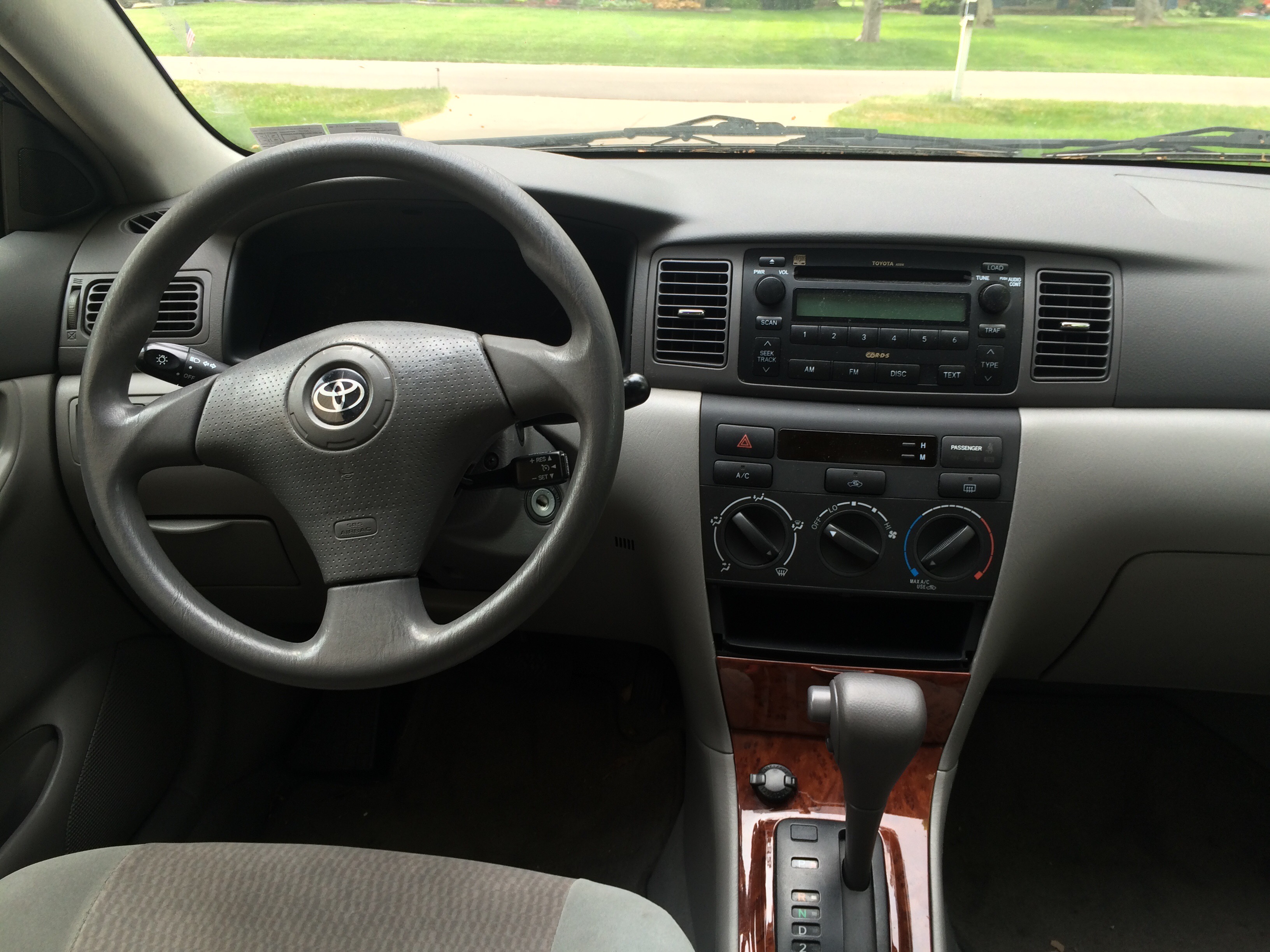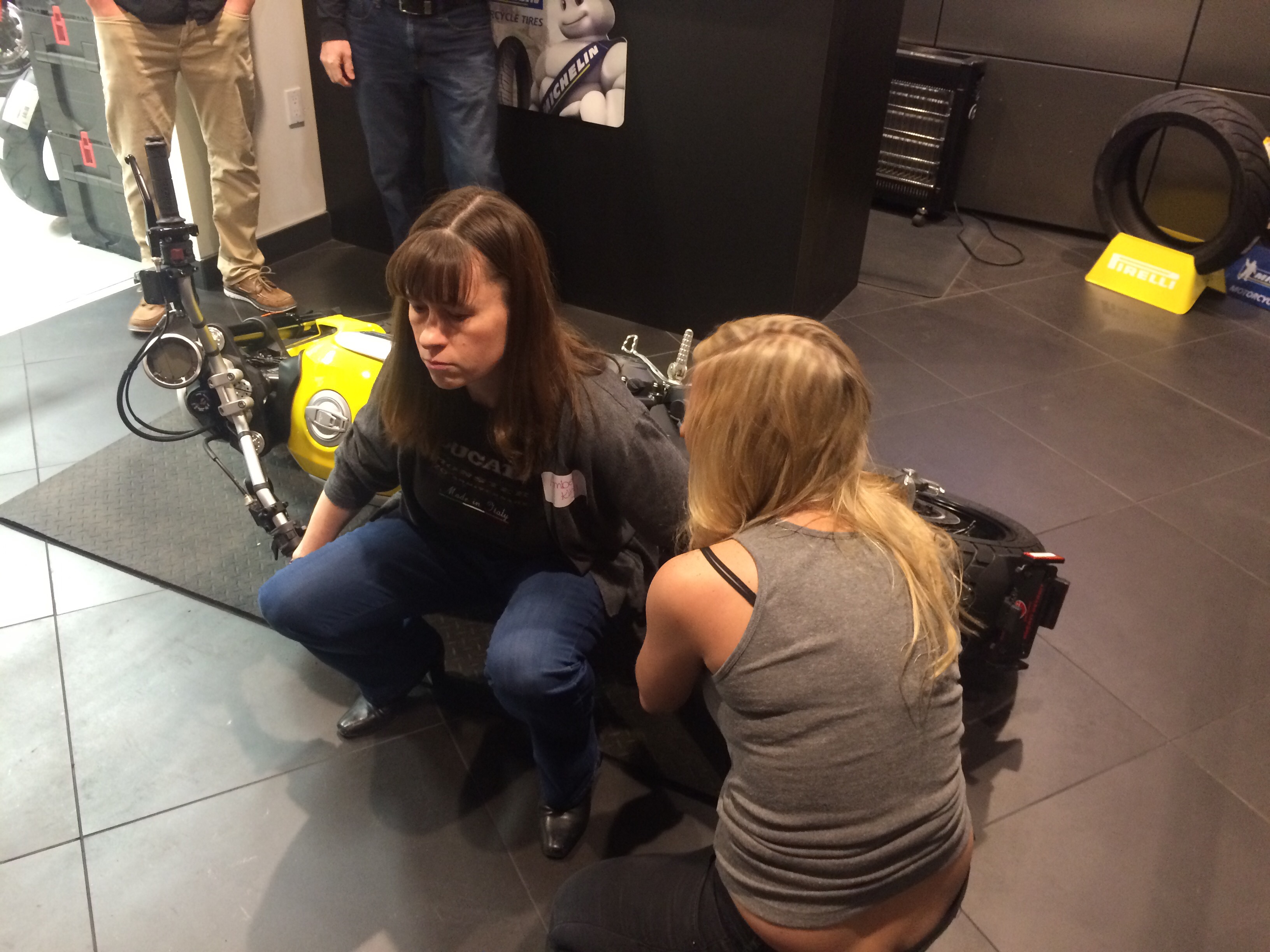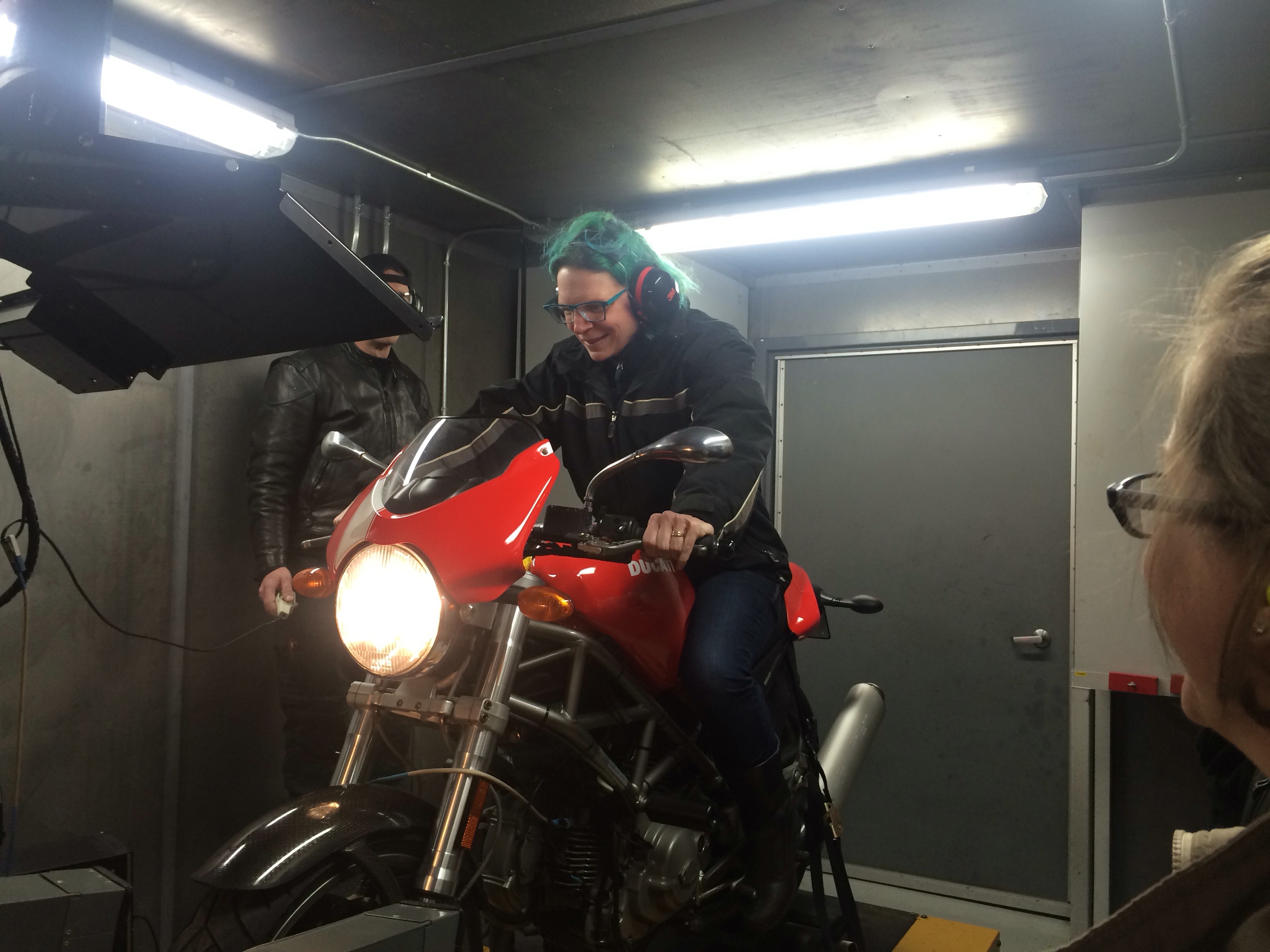gearchic is doing an awesome job busting the myths of seat heights of motorcycles. I want to go a step further and talk about how seat heights come to be, and why this sucks for smaller riders.
I own two of the most female-friendly bikes that exist – the enduring BMW F650GS single and the Kawasaki Super Sherpa. Both bikes came about their ladies’ bonafides in a round-about way – they were both designed for smaller men.
It sounds so simple, doesn’t it? Design for a smaller population and the smaller population will buy. It’s not quite so simple, because often, a bike has to be made for many sizes of rides, and as the US market is largely made of up large guys, we get bikes designed with large guys in mind. Tweaking a frame for various body geometries is not an easy task, what is given to the torso must come off the arms, the knees suffer at the expense of the hips, and you can see where that is going.
Think of cars for a minute – the designer of the retro Mustang was fired because a 6′ tall male did not fit in the back seat. The average car seat is adjustable to fit everything from a 4’6″ granny to a 6’6″ football player. That can’t happen on a motorcycle, because the degrees of freedom are far fewer and the hard points more numerous.
Big motorcycles happen because of the way the target rider is chosen. The average American male is around 5’10” and weighs something like 200 pounds. The average female is 5’5″ and closer to 145 pounds. Five inches and fifty pounds is a lot on a motorcycle. And if you’re on the smaller side, it’s a lot more.
Kawasaki developed the Super Sherpa for use as a delivery bike in various “second world” markets – places that are mostly first world, but have enough third world sections so as to make life difficult. It was to fit in under the KLX250 and allow Kawi to go after markets where the riders were smaller, but still needed the flexibility and durability of the KLX250. The electric starter, lower seat height, and softer suspension made the bike much more accessible, and while it was never really marketed in the US, it gained a fan base among guys who wanted to get their wives a dirt bike the ladies would be more comfortable on.
It’s a hit, and Sherpas are durable little buggers that ladies love like Cool James. Too bad they don’t really make it any more, and you are limited to finding someone who is willing to sell one. Mine came in a box and I had to rebuild it, which was worth every cent and hour invested.
A bonus with the Sherpa that seems to go unsung is the height adjustable rear spring. Akin to adjusting preload, it’s yet another reason the Sherpa shines as a smaller person bike. No need to upgrade to get it sized properly, because making it smaller was on the drawing board from day one.
Way back when, BMW was roundly criticized for the early R65 – deemed a girl bike because the frame was smaller and the bike was targeted to smaller riders. The smaller boxer was no help there. Thankfully, the Bavarians were not completely put off the small rider thing, and tried again with the old BMW single – it was designed with a smaller rider in mind. The target rider was a 170cm male weighing about 70kg. That is by any measure a small guy. It’s also a slightly tall lady. Sprung from the get-go for lighter riders, and sized from the get-go for shorter riders, it gets even lower when you equip it with factory low suspension. I had that, and eventually swapped for normal, because I’m a 167cm lady weighing 61kg. I have the preload set to mostly extended, because as I grow as a rider, it gets easier to ride a taller bike and it also gets more fun to enjoy the suspension travel.
I hope that other manufacturers will start to follow BMW’s and Kawasaki’s leads in the use of smaller target riders. There is no denying BMW’s command of frame design for maximum suspension flexibility – they seem to be able to kick out frames that fit anyone with simple suspension swaps. It’s kind of disappointing that Kawi hasn’t put much into the small rider market on the dirt side of late, however it’s clear they can do it.
Let’s bring the smaller target rider to the forefront, and start at the drawing board, instead of trying to patch it up after the fact.













